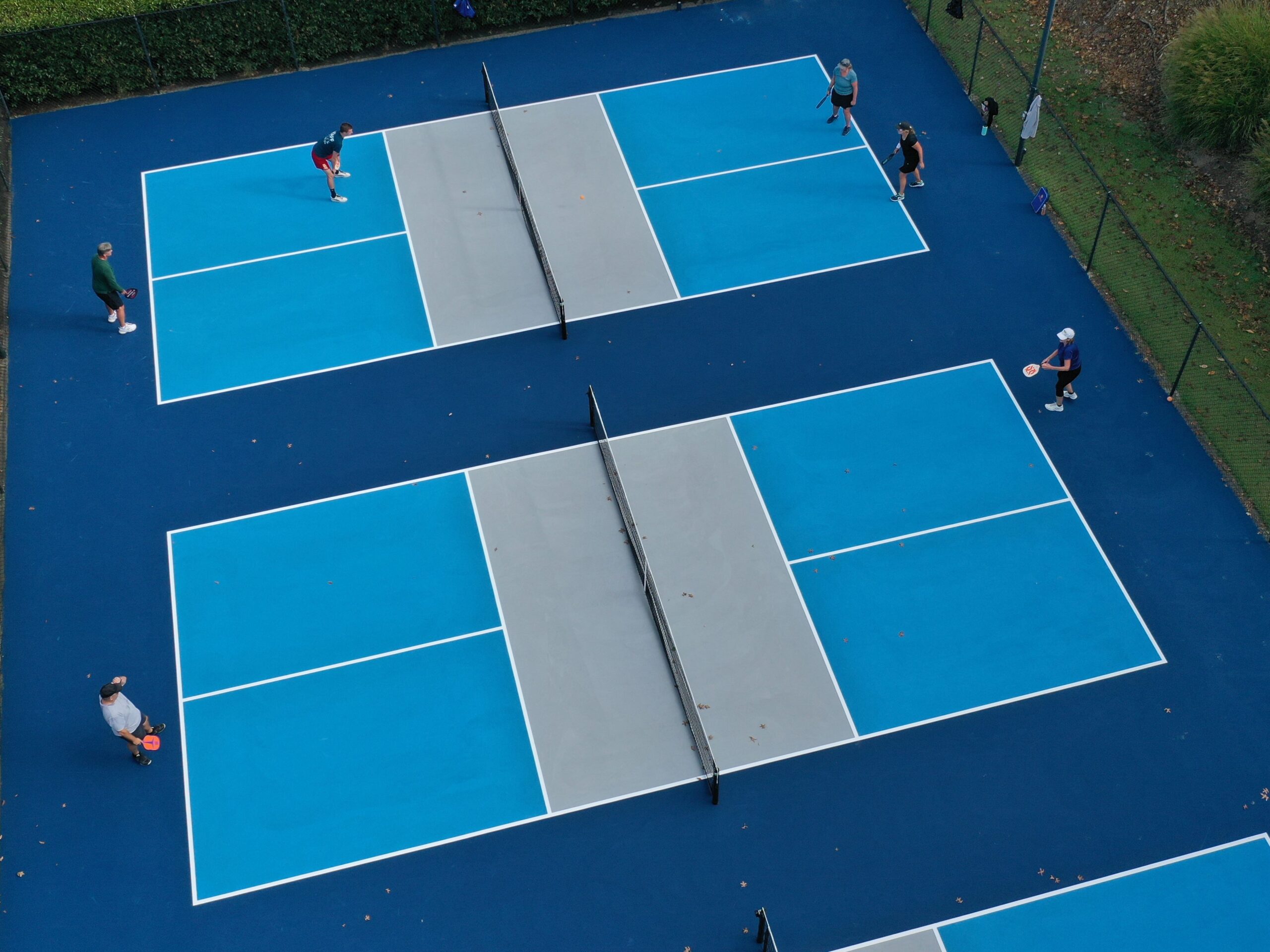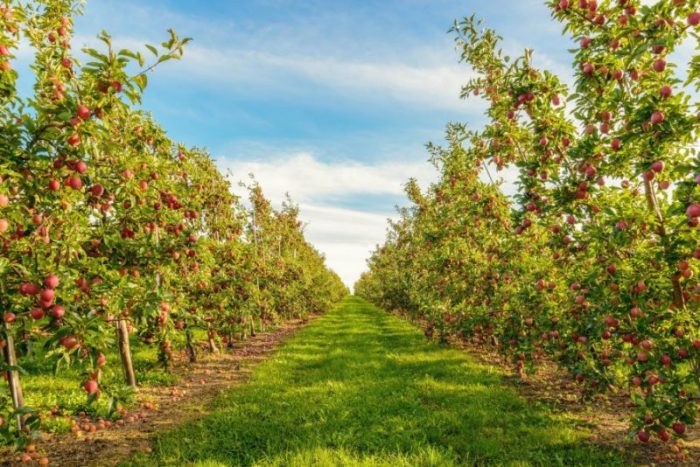The fastest growing sport in the country will soon be infused in the lifeblood of the communities at The Cliffs. We are talking, of course, about pickleball. But where did the game (which is a mixture of the fun elements of tennis, badminton and ping pong) come from?
For that answer you need to travel to the Pacific Northwest on Bainbridge Island (a short ferry ride from Seattle, Washington) in the mid 1960s. Three dads – Joel Pritchard, Bill Bell, and Barney McCallum – whose kids were bored with their usual summertime activities – are credited for creating the game. Learn more about their story in this video.
Pickleball evolved from simple handmade equipment and basic rules into a popular sport with a major presence throughout the US and Canada, and is gaining international traction in Europe and Asia. Today, major tournaments (like the Pickleball Mania World Championship) are featured on ESPN.
But why is the name “pickleball”- especially since no pickles or pickle ingredients (cucumbers, salt, sugar, vinegar) are used while playing? Well, there are a couple of theories according to the official USA Pickleball Association.
- According to Joel Pritchard’s wife, Joan, she started calling the game pickleball because “the combination of different sports reminded me of the pickle boat in crew where oarsmen were chosen from the leftovers of other boats.”
- According to Barney McCallum, the game was officially named after the Pritchards’ dog Pickles, who would chase the ball and run off with it. According to McCallum, “The Pritchards had a dog named Pickles, and you’re having fun at a party, right? So anyways, what the heck, let’s just call it pickleball.”
By all accounts, pickleball is here to stay as a fun leisure activity, and the plan is for each community at The Cliffs to have dedicated pickleball courts. It’s a sport you can play with your family and friends when they come to visit, and naturally, can range from a lighthearted rally to a fierce competition (depending on your playing partner’s Jordan-esque mentality). And you may find the seemingly novice nephew already has honed his pickleball skills on his home turf – unbeknownst to you. Beware of the hustler!
There are an estimated 15,000 indoor and outdoor courts in the United States, and at least one location in all 50 states. Schools are hopping on the pickleball bandwagon, too. The sport is being introduced from elementary to high school students in physical education classes.
And though the sport has become more competitive through the years, many players enjoy the social aspects of the game and the ability to stay active in their own towns and communities. More and more communities have adopted pickleball as an integrated sports activity for their population of residents, there is an explosion of new court construction throughout the United States – especially in the southern states.
According to the USAPA website, there are more than 2.5 million pickleball participants in the United States. And that number is growing.
So, if you haven’t already, it’s time to climb on the pickleball bandwagon.
Court and Paddle Terms
Backcourt: The back few feet of a courtside near the baseline.
Baseline: The line forming the back of the court. A standard baseline is 22 feet from the pickleball net.
Centerline: The centerline divides the service court into halves from the kitchen (non-volley zone) to the baseline.
Face: the surface of the paddle used for making shots.
Paddle: The thing you’re hitting a pickleball with. Don’t call it a racquet. The right term is pickleball paddle.
Kitchen (or “Non-volley zone”): The kitchen (or non-volley zone) is at the front of the net. Players cannot pick balls out of the air with volleys if standing in the kitchen
Shot Terms
Ace: A serve that isn’t returned by the receiving player, immediately scoring a point for the server.
Approach Shot: A shot hit while a player is moving towards the net.
Backspin: Spin created on a ball by slicing or chopping at it. Shots with backspin do not spring forward, stopping much closer to where they land. Effective when the opposing player is playing back too far.
Backhand: A type of shot created by hitting the ball on the side across the body from where they carry the paddle. For a right-handed player, a backhand shot hits a ball on the left side of their body.
Carry: A normal pickleball shot bounces off the paddle. A carry slides along the paddle during a forward swing.
Dink or Drop Shot: A soft shot, generally landing in the kitchen (non-volley zone). Also called a drop shot. A “drop shot volley” is a volley that is not smashed, but is gently played over the net in front of the opposition.
Double Hit: When a ball is hit twice by one team (one player) before it is returned over the net. Generally occurs when a ball accidentally hits twice off a paddle in a single swing. Results in a lost point for the player who committed the foul.
Drive or Forehand: Forehand shot hit on a player’s dominant side. For a right-handed player, the forehand is a ball hit on their right side. It usually generates topspin and stays low.
Half-Volley: A shot where the ball bounces but doesn’t reach its full height before it is struck. A half-volley “picks” the ball off the bounce.
Lob: A high return shot, effective against opponents who are crowding the net.
Overhead Shot or Slam: Shot hit over the shoulder, in a tennis serve motion. Often performed to return a ball that is lobbed or a ball that bounces above a player’s shoulder.
Punch: A quick volley shot that features little backswing or follow-through, the equivalent to stabbing the ball out of the air with the paddle.
Serve: An underhanded shot that begins a pickleball rally. You get 2 serves in pickleball, unlike tennis. You must serve the ball from under the waist level.
Top Spin: Spin by hitting a shot swinging low to high. Top Spin causes a ball to jump forward when it lands.
Volley: A shot that picks the ball out of the air before it bounces. Illegal shot type in the kitchen, or before the ball has been rallied 3 times (double bounce rule).
Strategy and Rules Terms
“Bounce it” or “Let it bounce”: A phrase used by a teammate who thinks that a ball is about to land out of bounds, and so you shouldn’t volley it out of the air. If the ball lands out of bounds, you score the point.
Double Bounce: It has two possible references. Pickleball has a “double bounce” or “two bounce rule” that prevents the ball from being volleyed before it has been hit 3 times in a rally. Alternatively, a double bounce refers to a ball that has bounced twice on a side before being returned. If a ball bounces twice before being returned over the net, the other team scores a point.
Doubles: A pickleball game played with 2 players against 2 players on each side.
Let: A serve that touches the net before landing in the appropriate square. The receiver calls “let,” and the server serves again without taking their second serve.
Pickle!: Word called out by server to alert all players that they are about to serve.
Replay: If teams disagree about who should be awarded the point on a play (it landed close to the line, possible volley from the kitchen) they may elect to replay a point without awarding it.
Pickled: Losing 11-0. (similar to getting skunked in ping pong)
Rally: Consecutive hits over the net until the play ends in a point being awarded from a fault.





